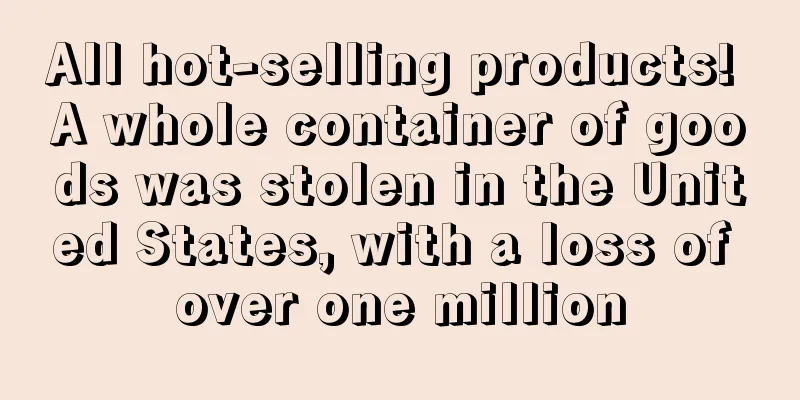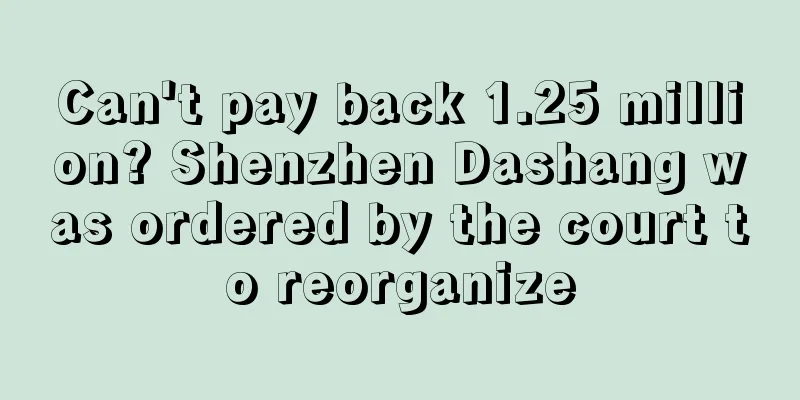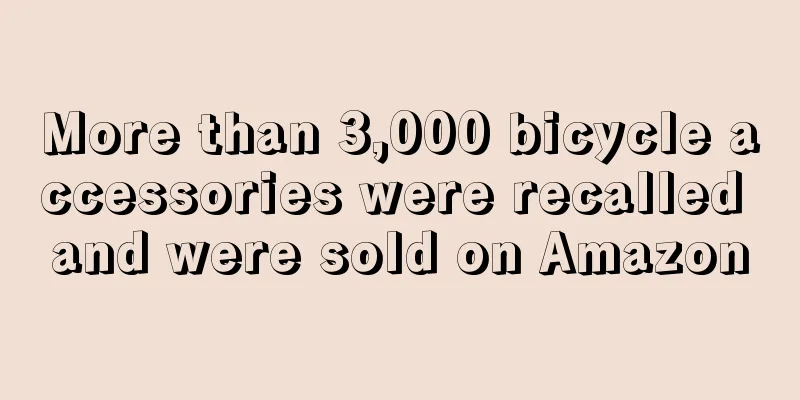Orders in many categories have been cut in half! Amazon's ACOS has exploded

|
In order to get rid of this situation, many sellers increased their advertising investment. However, as costs rose, the order results were not satisfactory. In addition, Shenzhen pressed the pause button, sellers' shipments were hindered, and the situation for subsequent orders was not optimistic.
In addition to the dismal order situation, Amazon's operating rules have changed, with more self-operated stores and higher compliance requirements . However, the good change is that the overall environment of the industry is gradually being standardized, which is beneficial to sellers operating in a formal manner.
Orders in many categories on European and American sites declined
Shenzhen has recently pressed the pause button, and many cross-border sellers are unable to ship goods, facing a shortage of goods crisis. Although temporary warehouses outside Shenzhen can receive goods, the shipping schedule will be delayed, and sellers who need to ship this week are in dire straits.
Fearing a shortage of stock, some sellers reduced their advertising spending. This made the already declining orders even worse. This morning, a seller opened the backend and found that the orders had dropped drastically, down 50%; another seller's orders on the US site also dropped by 30%-40%, but the advertising expenses increased by 50-100 US dollars, and the ACOS also increased from about 20% to about 50%.
This is not an isolated case. As home furnishing sellers in Shenzhen work from home, the declining orders seem even more hopeless, and there is even a "misery competition" in the industry , with many sellers hovering around 0 orders.
In recent days, there have been more and more feedbacks on the decline in orders. Compared with the previous direct statement of the decline in order volume and order ratio, this time, sellers not only reported the overall order situation, but also compared the situation in categories and sub-sites.
First, a large number of sellers on the US site reported a decline in orders in multiple categories; second, many sellers on the European site said that orders had reached an unprecedented low; finally, orders on the European and American sites were particularly like a roller coaster, with large fluctuations in number.
A US seller said that the recent order market is very cold, and the ranking and orders do not match at all. Another seller B said that Amazon's sales have declined recently, and the overall sales this year are not as good as last year. A colleague encountered the same problem: compared with the same period last year, the order dropped by 67% .
According to seller B's observation, the orders of fellow Amazon sellers have been declining recently, and the traffic of major keywords has also been declining. This situation has continued since February, with orders declining, but advertising has to continue.
The phenomenon of declining orders is reflected in multiple categories, among which auto parts and clothing are the hardest hit.
An auto parts seller asked helplessly: " Auto parts orders suddenly dropped by one-third , and the advertising effect is not good. ACOS increased from 25% to 55%, and the number of orders from advertising decreased by half. The overall order volume is not good, 50% less than last year. I don’t know if it’s because of the temperature drop or the increase in gasoline prices?"
Another auto parts seller said frankly that there were no orders from the ads recently, and ACOS didn't even dare to look at them. All the orders that came in were organic. Other auto parts sellers said that sales were terrible and demand had dropped a lot recently.
Clothing sellers reported that sales were high one day and low the next. They could make 80 orders today and only 40 tomorrow. Advertising was even more difficult to describe. Without adjustments, ACOS was 10% on a good day and could rise to 80% the next day.
Another colleague in the clothing category said that sales had dropped 80% year-on-year , and the company even suffered a loss in January, and advertising was also unstable.
A seller in the backpack category said that sales were cut in half, while others are still desperately promoting sales.
A furniture seller made a careful observation: "Some categories are good, some are not. Generally speaking, the top categories are not greatly affected, but the small categories ranked 40 and above are more affected."
A seller of office fast-moving consumer goods is puzzled: "Since the end of February, sales have been slowly declining, and ACOS has been slowly increasing. I don't understand, and there is no big change in the rankings."
Sellers of mobile phone accessories are not having an easy time either. One seller said that since the products have no reviews and no price advantage, they dare not set the advertising price too high, otherwise the ACOS will soar to the sky. They don’t know what to do in this situation.
A seller from the Adult Purpose website said that due to the poor quality of his products, he received negative reviews, and his ratings and order volume have been steadily declining.
Lighting seller C said that since January, the number of orders per day has remained at around 10. Toy sellers are worried: "10 orders have become 1, no matter how much advertising or off-site advertising is done, it's useless." Home textile sellers are helpless: "The entire market is crazy and involuted, with 0-5 orders per day."
Orders in many categories have dropped, and sellers seem to be competing to see who is worse off. One of my peers said: "I am worse off. I worked hard for half a year to finally get several main products on the homepage of major keywords, but due to operational errors, the rankings and positions are gone, and the order volume has dropped by more than 70%."
The decline in orders is not concentrated on just one site. Sellers operating on multiple platforms said that the number of orders has recently hit a record low. Whether in North America or Europe, there is little difference between a 10% and 50% discount on social media . Because there is no traffic, the company is transforming. If the pure white hat strategy can hold up this year, it will be easier next year. Feedback from sellers of the same product: " The US site has dropped by one-third, and the European site has dropped to only one-third . "
Due to multiple factors, orders in the European market seem to have reached an unprecedented low recently.
Many European sellers reported that their orders have dropped significantly. A German seller said that he ranked 25th in a small category and received three orders a day. Another seller was worried that his orders on the European site were not good, but ACOS was rising. More sellers of different categories on the European site reported that their orders were as follows:
“——Auto parts and car chargers in Europe, I spent a lot of money on advertising but the sales volume was dismal. Others have off-seasons and peak seasons, but my sales volume has always been dismal, and I am embarrassed to do it; ——Furniture category, located in the European station, with a stable order volume of two or three orders per day; ——Outdoor sports category, located in the European station, with stable order volume, two or three orders per day, no fluctuation; ——From February to now, the advertising bidding on the UK site is very high but there is no exposure. There are only a few orders every day, and I can no longer afford the loss; ——In the auto parts category of the European site, the three sites only have a few orders a day, which is really sad. "
An old seller on the European site said that the recent sales in Europe are really not good. The current exchange rate of the euro is almost catching up with the US dollar, and sellers simply don’t have much profit. The sanctions from different international forces brought about by the Russia-Ukraine conflict have made many Amazon sellers on the European site fall victim to the attack.
However, it is worth noting that although orders in many categories on European and American sites have declined, there are still sellers with strong orders.
A US seller reported good news: Why does it seem that as the US stock market rises, Amazon orders also rise? A UK seller suddenly found that his store was flooded with orders.
Others also reported good news. One seller said that sales in March had increased visibly, but the exchange rate had fallen, profits were very low, and peers had not raised prices. Another seller also said that 2022 was simply a good year, with orders pouring in.
When the overall orders were sluggish, some sellers were able to break through, which also verified the views of veteran sellers that the key to getting orders lies in the product.
Burning money: ACOS suddenly exploded
While orders on Amazon's European and American sites declined, the overall fluctuations were also large . Many sellers found that a product that had dozens of orders the day before suddenly had zero orders the next day , directly falling to the bottom.
Seller S said that the account had 50 orders the day before, then suddenly had 0 orders the next day, and was back to normal on the third day; Seller H said frankly that he found that the orders of several stores were unstable, and he did not do anything, but the store rankings and sales fluctuated greatly. Suddenly he couldn't do it and didn't know how to adjust.
Just yesterday, when sellers in Shenzhen could not ship, many sellers quietly reduced their advertising spending. A seller in Guangzhou said that the advertising that day was burning like a crematorium, and of course his orders were more than usual. Another seller shared the good news of becoming the Best Seller and asked, "Are all the people in Shenzhen on vacation?"
Industry insiders pointed out that this is how Amazon advertising works. It will promote whoever bids the highest. Everyone is raising their advertising bids, and the platform depends on the advertising fees.
The common problem we are facing now is that the advertising data has suddenly deteriorated , the orders have not increased, but the ACOS has suddenly exploded , and this is the case for many categories. Now only some Shenzhen sellers have reduced their advertising expenditures, while other sellers do not seem to have stopped the operation.
Many sellers were puzzled after seeing the data. One seller said frankly: " I feel like Amazon has changed its algorithm. The keyword weight of self-operated products has been increased a lot. Many self-operated products have very few orders , but the main keywords are ranked first or second. This phenomenon is becoming more and more common. "
In the sluggish market, many sellers have resorted to the trump card of low-price spiral in order to get orders . They first sacrifice their own profits, cut off a large piece of meat , and then, after maintaining their rankings and orders, they brag in front of others that they have successfully created a hit product .
Recently, there have been many sellers on Amazon offering promotions at low prices. One seller was very frustrated: " Everything is on sale, what's the point of doing it ? "
A toy seller said: "I used to have high profits, but now everyone is lowering prices, and some are even selling at a loss with a 50% discount. I still have a lot of goods floating on the sea, and I don't dare to think about how to clear them out."
Price cuts without profit are more of a frustration for sellers! One seller said that sales were very poor, and the product was delayed for various reasons and then put back on the shelves, and sales were even worse. My competitors put the same product on the shelves at a price 15% lower than mine . I really don’t understand how others make money, and I have no choice but to be forced to cut prices and join the spiral .
One seller was helpless: "New products have arrived, but this category has entered a vicious cycle. The original price was $59.99, but someone is making a strategic loss of $10."
Industry insiders joked: "Losing some money on Amazon is nothing. I wouldn't hesitate to lose millions in stocks. I just want to spiral and lose money."
The COVID-19 pandemic is a major factor in the current situation of cross-border e-commerce. How can sellers stand firm under the dual stimulation of the pandemic and geopolitical conflicts? This requires sufficient understanding of themselves and the industry.
Amid the pandemic, industry insiders suggest "examining yourself" from three points
Recently, the domestic epidemic has spread and broken out in multiple places, and the world has entered the third year since the outbreak of the COVID-19 pandemic.
In 2020, the epidemic broke out and many industries were hit. However, cross-border e-commerce stood out and ushered in super-fast development, attracting a large amount of capital and merchants. However, the situation took a sharp turn for the worse in 2021, with platform rectification, price involution, and skyrocketing freight and advertising costs. "Survival" and "stable development" became the main themes of the industry this year, and this sentiment has continued into 2022.
Obviously, the epidemic has had an impact on cross-border e-commerce.
Industry insiders believe that if the epidemic had not broken out, the development of cross-border e-commerce might not have changed so quickly. At least, there would not be major problems with the fiscal and taxation of various countries, and European tax compliance might be delayed. If the epidemic had not broken out, overseas users' shopping habits would not have changed significantly, and e-commerce demand would have grown normally. There might not have been a large amount of capital and merchants entering the market, and the fierce competition would have cooled down. If the epidemic had not broken out, logistics costs would not have changed magically, exchange rates would not have fluctuated widely, and the upstream supply chain would not have been greatly affected, which in turn would have affected the cost of upstream raw materials, etc.
This industry insider analyzed that going overseas nowadays is no longer like the bonus period, where you can’t just rush in and succeed in whatever you want. Cross-border sellers now need to examine themselves as a whole and understand the changes in the industry from a global perspective. In terms of self-examination, he gave three reference suggestions and thoughts:
1. How do you position your overseas expansion plan? Is it short-term or long-term? The short-term is to make a quick wave of money during the bonus period, and to enter and exit quickly. The short-term is still applicable at the moment, but you need to consider your own resources and characteristics. For example, during the epidemic, there was a demand for masks, and people with their own resources could also enter and exit quickly. During the bonus period, many people may be able to enter and exit quickly easily, even if they do not have many resources, because they are pigs standing on the vent of the wind, and it is still unknown whether they can grow wings in the later stage; and the long-term is to return to the essence of business: this is a long-term career, not a simple business, which requires comprehensive consideration of long-term input and output.
2. If you have a clear positioning, you need to consider your own advantages, such as full understanding of a certain type of product, factory resource advantages, logistics channel resources, or operational skills resources, etc. The era of going overseas alone is over. At present, more resources need to be integrated and the complementary advantages of the team are combined. For example, when choosing a partner, the seller may need the other party to have advantages that he lacks.
3. No matter what industry you are in, there are risks. You need to have a concept of stop loss. It is not to the point of "no success, no death". Especially for an unfamiliar industry, people need to have a stop loss point to determine what kind of loss they can accept. I never agree to sell your house or your wealth to enter an industry you are not familiar with. It is easy to get hurt. Even if you really succeed, it is not because of your own strength, but more like a pig on the wind. When the wind stops, if the pig does not grow wings, it will fall and fall badly.
The view of "going global" was praised by many sellers. In addition to self-examination, he believes that sellers also need to have a preliminary understanding and cognition of the industry.
"How do you understand this? If it is a bonus period, such as the year when Taobao's Double 11 event started, you don't need to know what the industry is like, you just sell whatever you have. Back to now, you need to know a wider range of knowledge, such as the current Ukrainian-Russian war, which has a great impact on overseas expansion:
First, it affects the exchange rate. As long as there is political fluctuation, the exchange rate will definitely be affected. Second, it will definitely affect the logistics timeliness. The logistics passing through the war zone will be more or less affected. Third, it will definitely affect the consumption power of the countries in the war zone. Fourth, it will more or less affect the price of bulk commodities, which will further affect the cost price of domestic raw materials. These things that seem to have nothing to do with us for the time being will affect our plans to go overseas. "He said.
At present, sellers going overseas need to have a comprehensive knowledge system, not just a single ability. Take Amazon as an example, even if sellers intend to abide by the old rules, the platform will push them forward.
Amazon accelerates compliance process
This year, Amazon’s European and American sites have put forward higher requirements for product compliance.
In February, Amazon.com issued a notice on filling out the FCC, reminding sellers to add FCC compliance information to relevant products. Starting from March 7, Amazon began to remove ASINs that lack the required FCC information until the seller provides the information.
Amazon policy states that all radio frequency devices ( RFDs) must comply with Federal Communications Commission (FCC) regulations and all federal, state, and local laws applicable to these products and product listings.
The FCC broadly categorizes RFDs as any electronic or electrical product that can emit radio frequency energy, which, under its regulations, includes almost all electronic or electrical products. Products regulated by the FCC as RFDs include Wi-Fi devices, Bluetooth devices, radios, broadcast transmitters, signal boosters, and devices that use cellular technology.
Amazon reminds that if sellers sell such products on Amazon, they need to perform one of the following operations in the FCC radio frequency emission compliance attribute:
1. Provide evidence of FCC authorization, including the FCC certification number or contact information of the responsible party defined by the FCC. 2. Declare that the product cannot emit radio frequency energy or does not require FCC radio frequency device authorization.
Subsequently, many sellers received email notifications that their products had been identified as radio frequency devices and needed to fill in FCC information:
“…we have identified the ASINs linked at the bottom of this email as products that emit radio frequencies. The purpose of this email is to inform you that we require you to provide FCC compliance information for these and all products that emit radio frequencies in order to be listed on Amazon.com.”
To avoid listing deletion, sellers on the US site must provide relevant compliance information as required.
In addition, the European site has begun to implement the Extended Producer Responsibility ( EPR) regulation, an environmental policy that requires producers to be responsible for the entire life cycle of the products they place on the market, from product design to the end of the product life cycle (including waste collection and treatment).
Starting in 2022, for sellers selling in France and Germany, Amazon will confirm whether they comply with Extended Producer Responsibility (EPR) requirements in the countries where the products are sold, and collect and verify the seller’s EPR registration number.
If the seller cannot prove to Amazon that they meet the EPR requirements, Amazon will take appropriate action.
On the German site, Amazon is obliged to suspend non-compliant products listed by sellers under the EPR product category, including packaging: primary packaging (i.e. product packaging) and secondary packaging (i.e. delivery packaging) - all products from July 1, 2022; electrical and electronic equipment (EEE) - all products that are electrical and electronic equipment from January 1, 2023.
In France, if a seller sells EPR-compliant products through amazon.fr to buyers with delivery addresses in France, but does not provide Amazon with a valid EPR registration number corresponding to these EPR-compliant products, Amazon will default to paying the corresponding EPR environmental protection fees to qualified producer responsibility organizations on behalf of the seller and charge the seller the corresponding amount.
Stepping out of the scope of daily operations, the domestic epidemic situation is frequent, and the operations of cross-border sellers in many places are restricted; and at a larger environmental level, the Russia-Ukraine conflict, which is unknown when it will end, is leading to a series of problems such as depreciation of foreign exchange rates, decline in purchasing power in the Russian or European markets, and rising international logistics costs. The financial strength and adaptability of cross-border sellers are being put to the test.
For most cross-border sellers, 2021 was certainly difficult, but at the beginning of 2022, more uncertainties emerged. How many cross-border sellers can make steady progress in the context of great waves? This is an unknown. Amazon US Cross-border e-commerce market |
<<: The Qingming Festival is approaching, and Amazon reminds sellers to set up holiday mode!
Recommend
More than 10 million users per week! South Korea's second-hand market is expanding rapidly
It is known that one in five Korean citizens uses...
Young people's "home life": chasing domestic food and treating electrical appliances as figurines
Young families' online consumption continues ...
Tmall 618 launches: Pre-sale starts at 8pm on May 24th
Just now, Tmall announced that there is no need t...
Amazon video certification failed, and the account with 350,000 inventory was suspended!
Amazon video authentication is still ongoing, and...
What is Yaodou.com? Yaodou.com Review, Features
Yaodou.com is a third-party pharmaceutical trading...
What is Falabella? Falabella Review, Features
Falabella is a Chilean online shopping website tha...
Outdoor sports are picking up, with Amazon's annual revenue in this category approaching $75 billion
In the past two years, the global epidemic has be...
From near bankruptcy to annual sales of tens of millions of dollars, a niche brand successfully turned around
As we all know, professional equipment such as fi...
Two million packs sold in four months, strong sales of Korean vegetarian products
Veganism , a plant-based lifestyle often referred...
Facebook to invest $100 million to help small businesses grow
Facebook announced today that it is investing $10...
Beauty product sales soar on Shopee and Tokopedia, Indonesian cosmetics become the next hot spot
According to foreign media reports, Shopee and To...
TikTok ads reach over 1 billion adults every month, ranking sixth in the world!
Recently, the research organization Data Reportal...
Smart security and technology products will usher in a boom period during the peak season!
For the upcoming "Black Friday" and Chr...
What is PhonePe? PhonePe Review, Features
PhonePe is a mobile payment company that has devel...
Attention! Lazada will upgrade the parcel collection point "Collection Point"
Recently, according to foreign media reports, in ...









